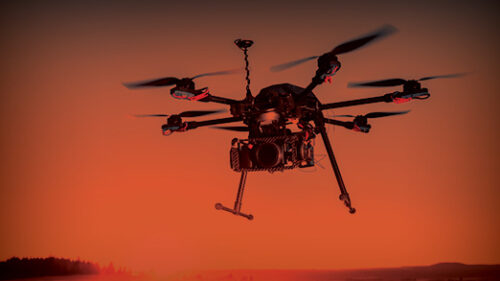A tractor…yes. Irrigation system…sure. Grain dryer…possible. But have you ever heard of a drone being used as an agricultural tool? It’s a “thing.” In fact, believe it or not, agriculture is No. 4 on the Top 10 List of Operational Industries that currently have commercial exemption status with drone rules. And the “field” is about to open a lot further.
The U.S. Department of Transportation’s Federal Aviation Administration (FAA) finalized the first operational rules for routine commercial use of drones conducting non-hobby operations on June 21, 2016. The new rules will take effect late August — which is good news for those in the agricultural business.
Drones can make operations safer and more efficient. Just think about it for a moment. Drones can reveal patterns that expose issues such as irrigation problems, soil variation, and pest and fungal infestations that aren’t apparent at eye level. They can survey crops as often as necessary to reveal trouble spots or opportunities for better crop management sooner.
And icing on the cake…the new rules are:
- Common sense and reasonable, which will help create a culture of safety and responsibility
- Designed to minimize risk to other aircraft and people and property on the ground
Operational Limitations for Drones
But there are some operational limitations each potential drone owner needs to know. The following are just a few:
- The drone must weigh less than 55 pounds; must remain within the visual line of sight of the remote pilot; and may not operate over any persons not participating in the operation, not under a covered structure, or not inside a covered stationary vehicle.
- The drone can only be involved in daylight operations or at twilight if the drone has anti-collision lighting.
- There’s a maximum ground speed of 100 mph allowed and a maximum altitude of 400 feet above ground level (AGL). If the drone goes higher than 400 feet AGL, it must remain within 400 feet of a structure.
- Operators must be at least 16 years old, have a remote pilot certificate with a small unmanned aircraft systems (UAS) rating, or be directly supervised by someone with the certificate. To qualify for the remote pilot certificate, an individual must either pass an initial aeronautical knowledge test at an FAA-approved knowledge testing center or have an existing non-student Part 61 pilot certificate. If a person qualifies under the non-student Part 61 pilot certificate, he or she must have completed a flight review in the previous 24 months and take a UAS online training course provided by the FAA.
It’s a lot to take in, but if you’re planning on adding a drone to your operation, we also suggest:
- Following a strict maintenance schedule.
- Preparing and sticking to a mission plan.
- Conducting a pre-flight inspection.
- Monitoring weather conditions.
- Using visual observer.
- Keeping a flight log.
- Avoiding sensitive infrastructure or property, such as power lines, water treatment facilities, and government facilities.
While I’ve listed some best practices above, by all means, if you have questions, reach out! Holmes Murphy has expertise with agricultural companies and can help with identifying exposure, risk management, and insurance protection with drones. We’d be interested to hear your questions and happy to share our knowledge. Comment below or contact us directly!







